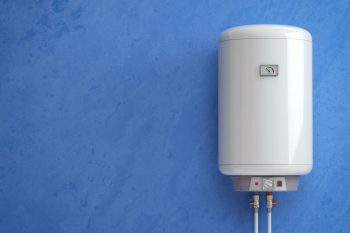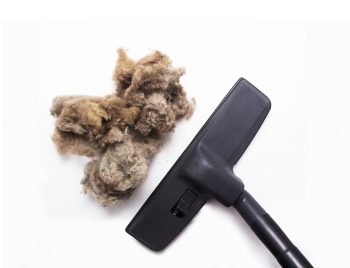
According to experts, front-load washers are 25% more efficient regarding energy and water use.
But there is a downside. The front load washer is more prone to foul odors than its top load counterpart. So if your front-load washer has developed a stink, know that you aren’t alone.
However, just because it’s prone to foul odors doesn’t mean you should leave your front-load washer in its stinky state. Wondering how to get rid of that offensive odor wafting from your front loader?
Here’s what you need to do.
- Front-load washing machines are prone to foul odors because of their design.
- Thorough cleaning with baking soda, vinegar, or washing machine cleaner can neutralize foul odors.
- Make sure to clean your washing machine at least once every 2-3 months.
- Dry your machine after use and choose the right laundry products to avoid smells from recurring.
Over time, your front-load washer can develop a foul odor. Fortunately, there are things you can do to get rid of the smell and prevent it from happening again in the future.
Why Does My Front Load Washer Smell So Bad?

Despite being more efficient than top load washers, front load washers have one major drawback — they’re prone to foul odors.
That is because, with a top load washer, the machine doesn’t need an air-tight seal on its door since water can’t be pressed against it.
With a front load washer, the door requires a gasket to create a tight seal and prevent water from leaking out. It’s this same seal that prevents pent-up moisture from exiting the washer when the cycle is done.
Since the interior of your front load washer will remain damp after use, closing the door will seal the excess moisture inside, causing bacteria to thrive.
The gasket itself is made of a soft rubber material. When it’s always left wet, it can become a breeding ground for mold and mildew, further exacerbating the smell.
How To Clean a Smelly Front Load Washer
1. Wipe All of the Interiors
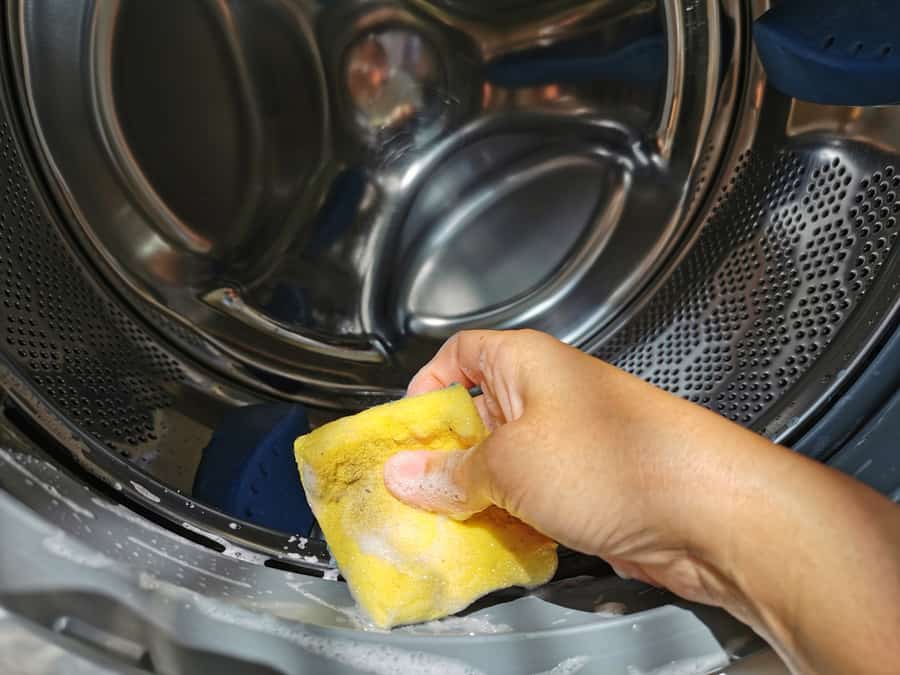
As you get started, you’ll want to wipe all of the interiors of your front load washer. This includes your gasket.
Pull the rubber material back to reveal the spaces between the creases and folds. You should find built-up gunk just lurking in between the rubber pleats.
This gunk is an accumulation of everything you put in your washer, including detergent, fabric conditioner, water, and other products you use with your laundry.
Use a soft, clean towel or paper towel to wipe off the sludge.
Then you can get to wiping the door and the glass. Some owners prefer an all-purpose cleaning solution to wipe the door’s hardware and surfaces.
2. Run a Cycle

- Add a cup of baking soda to the tub ( not the detergent drawer) and run a wash cycle with warm water.
- Add about a cup of vinegar to the tub and repeat the process.
- Then you can run another cycle to rinse the leftover baking soda and vinegar.
- You can use a commercially available washing machine cleaning solution.
Make sure to read the instructions on the labels to find out how much you should add to the cycle.
3. Clean Other Parts
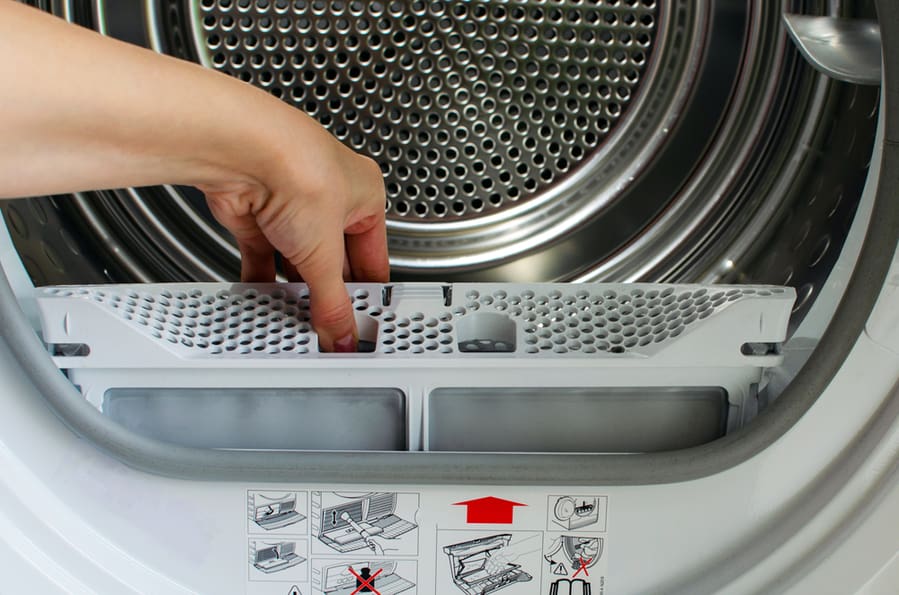
With the tub all clean, you can start cleaning the detergent drawers. Pulling it out can remove it from its receptacle in the washer, giving you a better chance to clean all of its nooks and crannies.
This also allows you to wipe and clean the compartment that houses the little drawer.
You might also want to consider cleaning the drain pump filter and the filter when you’re done. Most of the time, you must run the part under warm water to get rid of accumulated dirt.
In the same way, you’ll also want to clean and wipe its corresponding compartment.
How To Prevent Front Load Washer From Developing Foul Smells
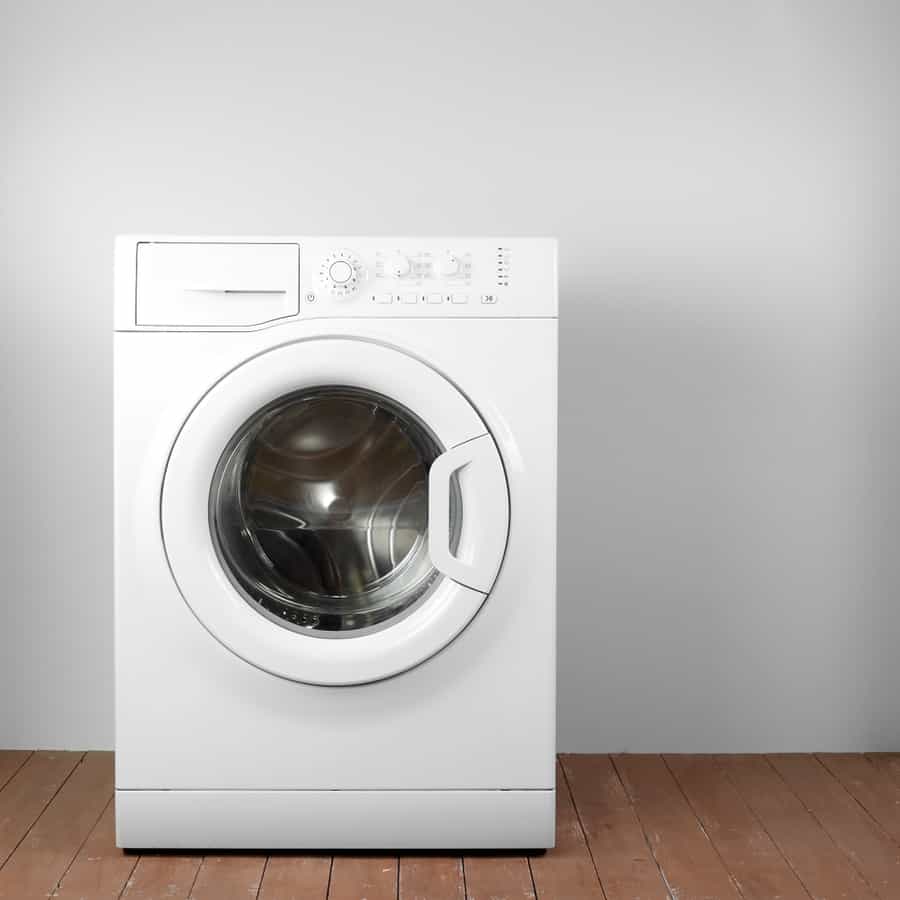
- Wipe the doors and interiors dry after every cycle.
- Use detergents to reduce the production of suds that could turn to gunk later.
- Minimize the amount of fabric conditioner that you use.
- Keep the drawer and detergent drawer open for at least 15 minutes before closing after every wash.
- Perform a routine cleaning at least once every two to three months or as needed.
Takeaway
No one wants to wash their clothes in a front-load washer that stinks. If your front-load washing machine has recently developed a foul odor, try these steps to neutralize that bad smell.
Make sure to keep your washing machine in check in the future to prevent the odors from taking over again.
Frequently Asked Questions
Is Vinegar Bad for My Washing Machine?
In excess, it can be. Vinegar is acidic and can wear away the different parts of your washing machine if used too often.
If you’re cleaning your washing machine, add enough vinegar to neutralize odors. If you don’t want to use vinegar, you can opt for commercially available washing machine cleaners.
Do High-Efficiency Washing Machines Smell Worse?
They can. High-efficiency washing machines use less water than standard washing machine models.
So they leave more detergent and fabric conditioner residue, especially if you put in an excess. That’s why it’s important to regulate how much product you use, as this can exacerbate foul odors.



